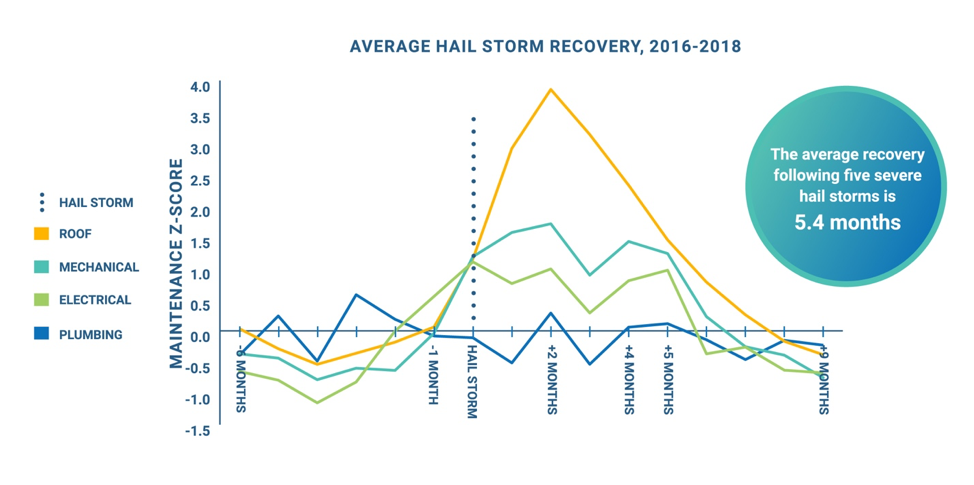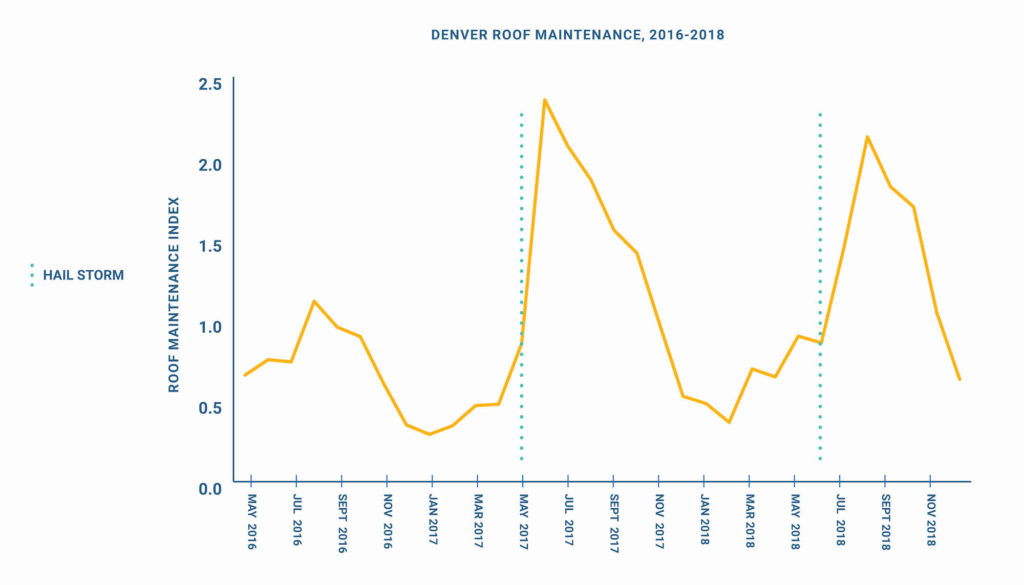Hail season has commenced, and the Midwest and Texas are already seeing a steady rise in storm activity. Forecasts indicate this region will see continued convective storms in the coming months, spiking insured losses across the region. Following several years of severe weather, carriers that closely monitor recovery activity will have the upper hand in efficiently prioritizing claims, mitigating instances of fraud and preventing premium leakage. Our very own Holly Tachovsky touched on this in a recent webinar on historical hail activity.

Window for Hail Claims Resolution Closes After 5 Months
In an analysis of five severe hail storms between 2016 and 2018, BuildFax found that the average timeline for recovery following a severe hail storm is 5.4 months. Unsurprisingly, roof maintenance saw the greatest increases after each storm – roof maintenance, in aggregate, rose 246.92 percent in the subsequent three months. Following roof repairs, mechanical systems saw significant increases in maintenance work.
While roof and mechanical systems experienced the most repair work, Tachovsky indicated that a growing trend following hail storms is an overall increase in maintenance activity, which she attributes to homeowners repairing other facets of their home while the contractor is on site. In these cases, it’s particularly important that carriers ensure homeowners are properly insured in the event of premium-impacting property changes. As more systems on a property get updated, it’s likely premium-impacting changes will create blind spots on a carrier’s book of business.
Insured Losses Will Rise Considerably After Two Consecutive Years of Hail Storms
In cities that experienced back-to-back severe hail storms, roof maintenance activity understandably remained flat or even declined year-over-year after the second storm. Notably, the cost of roof repairs rose every year that the city experienced a hail event, even if the city had experienced a severe hail event two years in a row. This, in turn, will affect insured losses as the cost of roof repair and replacement skyrockets.

For instance, Denver experienced a 5.19 percent increase in roof cost in 2018 after costs already rose 6.76 percent the year prior. These increases are likely a result of labor and materials shortages driving up construction and job costs in the region. Increased populations may have also contributed to a rise in insured losses. As more people move to states like Colorado and Texas to take advantage of affordable living, the insured losses from these events increases as well. Especially as insured losses continue rising in hail-prone regions, insight into property change and risk conditions enables carriers to accurately estimate claims pay out and resolution.
For more information on how BuildFax can support claims and underwriting efficiencies amidst hail season, contact us today.